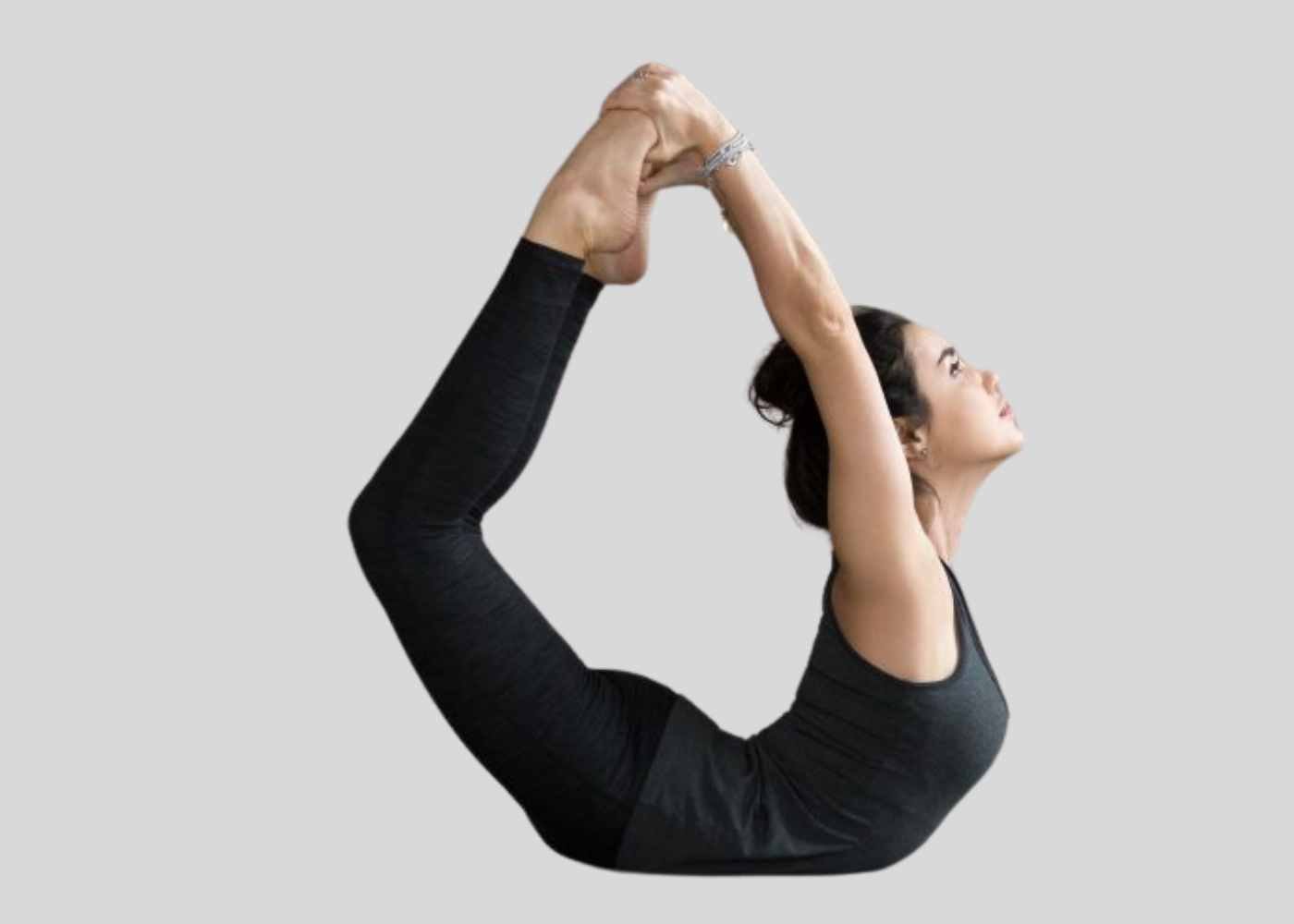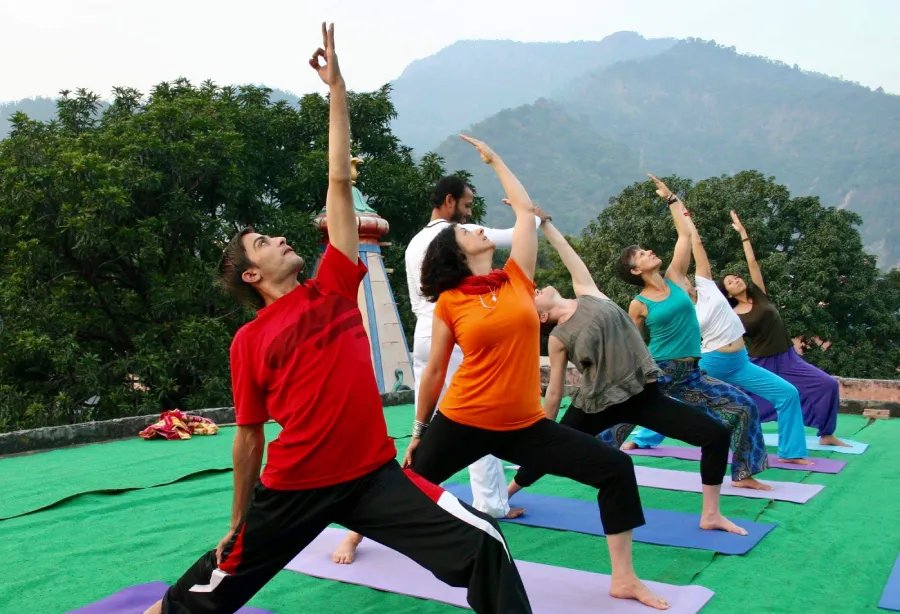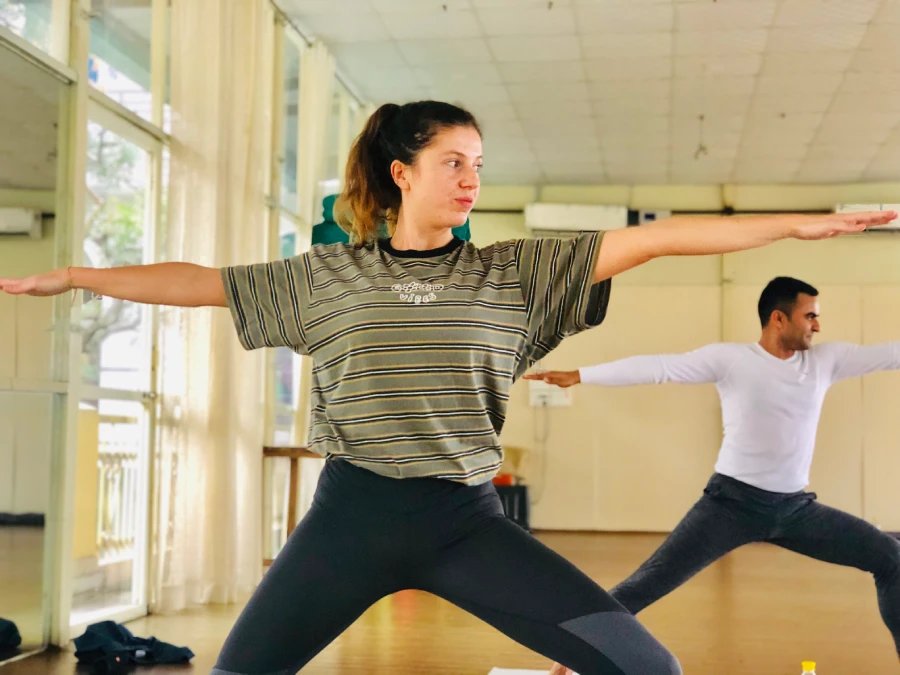Poorna Dhanurasana, also known as the Full Bow pose, is an advanced yoga practice that improves attention, strength, and flexibility dramatically. By needing more intense back bending and balance than Bow Pose (Dhanurasana), this asana goes beyond it. It is essential to have a solid foundation in backbends and to have mastered basic yoga postures to properly approach Poorna Dhanurasana. The Full Bow Pose’s steps, advantages, and safety advice are listed below.
Steps to Perform Poorna Dhanurasana
- Warm-Up: Warm up your body thoroughly, paying special attention to your thighs, hips, shoulders, and back. Your body can be prepared with poses like fundamental Dhanurasana, Setu Bandhasana (Bridge Pose), and Bhujangasana (Cobra Pose).
- Starting Position: Arms by your sides and legs extended behind you as you lie flat on your stomach.
- Bend Your Knees: Bring your heels up to your buttocks as you slowly bow your knees. Knees should be hip-width apart.
- Reach for Your Feet: Grab the outside of your ankles or feet with your outstretched arms as you reach for your feet. Use a yoga strap around your ankles to help you reach if you’re just starting with this pose.
- Inhale and Lift: As you take a breath, raise your thighs and torso off the ground and raise your heels towards the ceiling. Your abdomen should be the point of rest for your body weight.
- Deepen the position: Continue raising your thighs and chest to reach the full expression of the position, bringing your heels up to your head. Your shoulders and back need to be extremely flexible for this.
- Hold the Pose: As you get more flexible and strong, you should progressively extend the time you spend holding the posture. For beginners, this can be as little as 20 to 30 seconds. Concentrate on taking regular, even breaths.
- Release: Lower your legs and chest to the ground while releasing your ankles with caution. For a mild counterstretch, return to Child’s Pose (Balasana) after lying flat for a few breaths.
Benefits of Poorna Dhanurasana
- Strengthens the Back Muscles: includes strengthening the back muscles, which helps with posture, relieving backaches, and strengthening the entire back.
- Improves Flexibility: Consistent practice improves the thighs, shoulders, hips, and back’s flexibility.
- Stimulates Abdominal Organs: This position may help with digestion and detoxification by massaging and stimulating the abdominal organs.
- Enhances Respiratory Function: Deeper breathing is made possible by expanding the chest, which can expand lung capacity.
- Stress Relief: By concentrating and breathing deliberately, this yoga pose, like many others, can help release tension and stress.
Precautions and Contraindications
- Back Problems: This posture should be avoided by people who have ongoing back issues, such as herniated discs.
- Neck Injuries: People who have suffered a neck injury should move carefully and take care not to compress their neck.
- High or Low Blood Pressure: Individuals who have problems with their blood pressure should practice this position under supervision.
- Pregnancy: Because of the severe abdominal pressure, it is not advised for pregnant women to undertake this.
- Preparation: Poorna Dhanurasana is an advanced pose, therefore it’s important to warm up properly and practice backbends enough before attempting it.
Yoga should always be done within the parameters of your own skills. It could be helpful to practice Poorna Dhanurasana under the supervision of a trained yoga instructor if this is your first time doing the pose. They can offer you specific guidance and corrections.
Learn to know more about yoga pose so you can visit best yoga school and join 200 hour yoga teacher training in rishikesh and 200 hour yoga teacher training in bali




